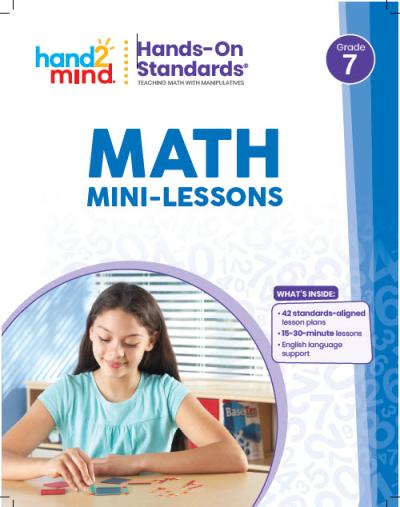Evaluation for 3.2b
If designed to be static, materials include educator guidance for effective lesson delivery and facilitation using various instructional approaches.
The materials include embedded guidance and provide educators with prompts to facilitate effective lesson delivery using various instructional approaches, including opportunities for student discourse and hands-on exploration via strategically utilized math manipulatives. The materials include directions for utilizing thirteen different manipulatives: Algebra Tiles, AngLegs, Centimeter Cubes, Magnetic Percent Bar Answer Boards, Polyhedral Dice, Rainbow Fraction Circles, Rainbow Fraction Circle Rings, Rainbow Fraction Squares, Relational Geo Solids, and Spinners. In "Find the Circumference of a Circle," the concepts of circumference and pi are presented through various instructional approaches to support a deep conceptual understanding. Students engage in hands-on learning by measuring the diameter and circumference of real-world circular objects and discovering the relationship between diameter and circumference. They organize their findings in a data table and calculate a ratio, which leads them to generalize the value of pi. Guided discovery introduces the formula for circumference. The lesson includes a real-world application that asks how much ribbon is needed to wrap around a can, aiming to embed authenticity into the lesson. The "Talk About It" section encourages student discourse in discussing how to find the circumference from the radius. The "More Ideas" section encourages students to work and communicate in groups. Visual and concrete models, such as pegboards and traced circles, help further support student understanding. With teacher-led guidance, hands-on manipulatives, and independent practice, students engage in multiple instructional strategies that support diverse learning styles, culminating in a formative assessment. In "Find the Angle Measurement," students solve for unknown angles. Students use AngLegs and protractors for hands-on experience, while educators are guided to ask students to construct angles and measure them. Students use visual models and charts to record their measurements, look for patterns, and then connect those patterns to algebraic equations. The lesson includes real-world problems, such as angles formed by hands on a clock, to make the math more real-world and relatable. Students discuss their thinking, compare angle relationships, and explain how they determine the type of angle they are working with. Students work with a partner to "draw a set of vertical angles and measure one of them. Then have a partner write an equation to represent each of the other angles on the drawing and solve the equations." Then, students check with the protractor using hands-on tools. In the formative assessment for independent practice, students solve a real-world problem involving a plumber working with pipes. Multiple examples of different instructional approaches help ensure students' understanding.



